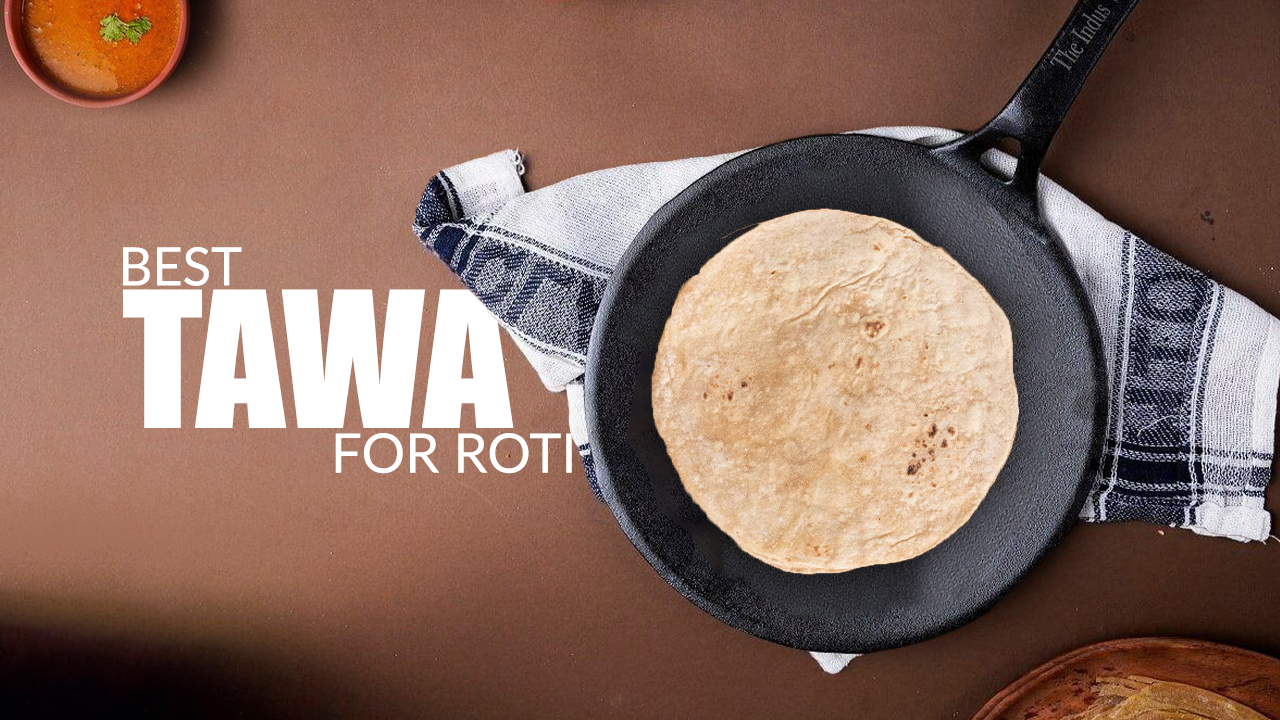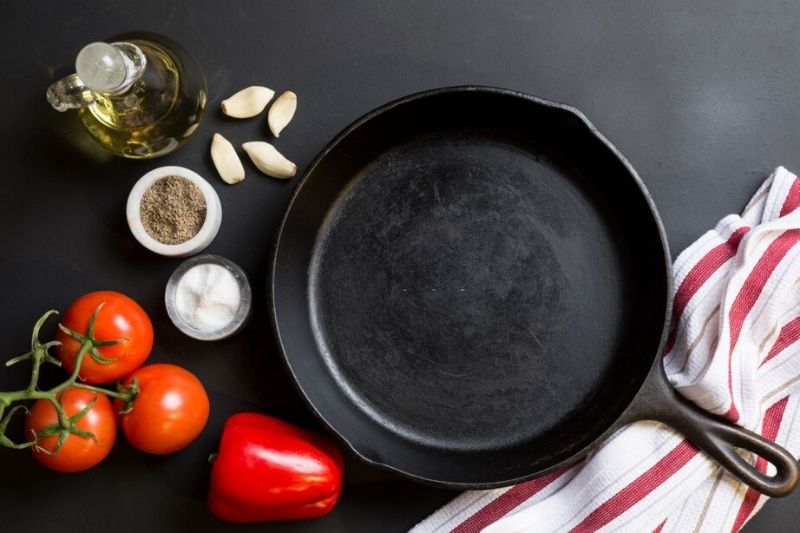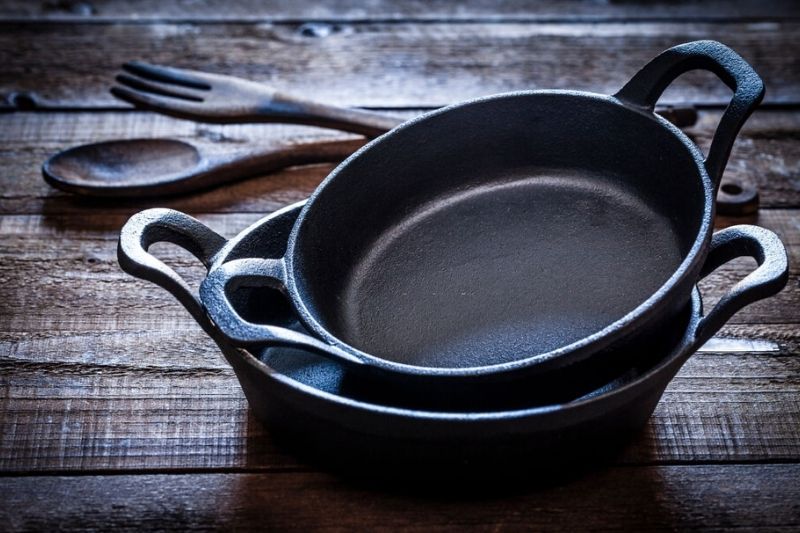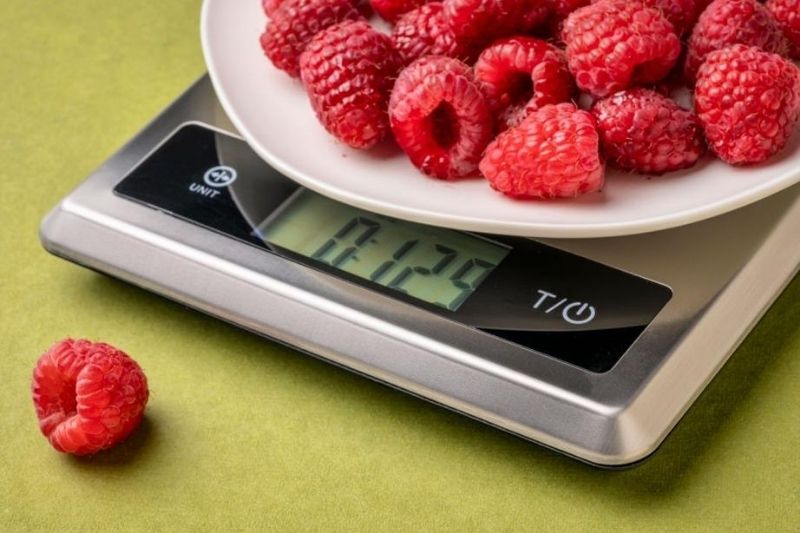Cast iron cookware can easily rust. Fortunately, there are several ways to solve this. We’ve mentioned 2 popular ways of removing rust from cast iron pan.
To prevent the problem from happening again in the future, take care of your cast iron cookware as explained below.
Remove Rust From Cast Iron Pan
Remove rust using salt
If you have noticed that on one of your best cast iron cookware in India there is a small circumscribed area attacked by rust, you can try removing it with salt.
- Sprinkle the rusty cookware with the salt – The cast iron must be covered with a rather thick layer of salt. The amount of salt needed varies according to the size of the cookware. To give an example, for a 30 cm diameter cast iron skillet you will need to use about a pound of salt.
- Now rub the cast iron with a potato – It should be tough enough to allow you to remove the rust by rubbing the salt against the cast iron. Cut it in half and place it on the cookware with the pulp facing downwards, then use it to rub the salt against the rust in order to remove it from the cast iron. Press the potato hard against the cookware as you rub, the rust will come off more easily. Move in circular motions. If you are looking to remove rust from a cookware, don’t forget to also remove it from the sides and bottom too.
- Rinse and dry the cookware – When you have successfully removed the rust, rinse the cast iron with running water from the sink. Be careful to remove any salt and potato residue, then immediately dry the cookware with kitchen paper. Finally, heat it on the stove over low heat to evaporate even the last traces of humidity. It is very important to dry the cookware immediately. The water causes the cast iron to rust, therefore leaving the damp rust would quickly return.
- Treat the cookware with the oil to make sure that a protective coating forms on the cast iron surface – Unfortunately, by scratching it with salt, in addition to rust, you will also have removed the patina that protects the cast iron. To restore it, grease it by rubbing it with a sheet of kitchen paper soaked in seed or olive oil. Then take a clean sheet of kitchen paper and remove the excess oil. At this point, put the cookware on the stove and let it heat over low heat for about 30 minutes. The oil will create a protective coating on the cast iron surface. After removing the cookware from the stove, dab it again with kitchen paper to absorb the last residues of oil. Keep it in a moisture-free place.
Remove rust using vinegar
If the rusty area is very large, you may need to dip it in the vinegar.
- Mix water and white wine vinegar in equal parts – This method is very effective and works even if rust has attacked a large area of the cookware. The amount of water and vinegar needed depends on the size of the cookware, as it must be completely immersed in the acid solution. Pour the water and the white wine vinegar into the container in which you intend to soak the cookware; you can use the sink or a basin.
- Immerse the rusty cookware in the mixture of water and vinegar – Check that it is completely submerged. You can soak it in the sink or basin until the rust has come off.
- Occasionally check the situation – The soaking time varies based on the amount of rust. In general, it is better not to leave the cast iron in the bath for more than 8 hours, but depending on the result you can remove it from the mixture of water and vinegar even earlier. Check every half hour or so and remove the cookware from the water as soon as the rust is gone. By letting it soak even after the rust has dissolved, the vinegar will begin to directly affect the cast iron.
- Wash the cookware – After removing it from the water and vinegar bath, it is important to wash it immediately. Rub it with a soft sponge soaked in soapy water to remove any vinegar residue. Use a mild detergent and avoid abrasive sponges because they can damage the cast iron. If you want, instead of the sponge, you can use a dish brush.
- Put the cookware in the oven – First dry it by dabbing it with a tea towel or kitchen paper, then put it in the hot oven for half an hour to evaporate the residual moisture.
- Restores the protective layer on the cast iron – In addition to rust, the vinegar will also have removed the protective coating that generally protects cast iron cookware, so you need to recreate it. Soak a sheet of kitchen paper with the seed or olive oil and then rub it on all the cast iron parts of the cookware. When finished, put it back in the hot oven (175 ° C) for 45-60 minutes.
📌 Handpicked related articles:
– How to clean cast iron
– How to store cast iron pan
– What not to cook in cast iron pan
Prevent Cast Iron From Rusting
You have read about how to remove rust from cast iron cookware. But, if you take care of your cast iron properly, you can prevent it from rusting. Here are the few points that you should consider while using cast iron cookware.
- Clean the cast iron cookware properly, otherwise, it may rust again – First, never leave it to soak in water after use. It is important to wash it immediately with coarse salt to remove food residues. Unless it’s really very dirty, it’s best to avoid using detergent. Once cleaned, dry it completely instead of letting it drain in the dish drainer together with the rest of the dishes.
- Keep it dry – Make sure it doesn’t accidentally get wet. Never leave the cast iron cookware in the sink and do not put it in the dishwasher. Cast iron rusts if it stays wet.
- Store it in a dry place – Choose a place protected from water and moisture to prevent rust from forming. Cover it with a paper towel before putting it in one of the kitchen cabinets. This will protect it from dust and you won’t have to rinse it before using it again.





